Grill manufacturing has evolved over the years, with advancements in technology reshaping the way these backyard essentials are produced. One such evolution is the shift towards in-house mold making, a process that’s not only revolutionizing efficiency but also setting new standards for quality and customization. This article delves into the intricacies of in-house mold making for grill production, highlighting its benefits, challenges, and the future it promises.
The Benefits of In-House Mold Making for Grill Production
In-house mold making offers a myriad of benefits that can significantly enhance the grill production process. By keeping the mold-making capabilities within the company, manufacturers can achieve a level of control and efficiency that is often unattainable through external suppliers. Here’s a closer look at some of the key advantages:
1. Enhanced Speed and ResponsivenessWhen mold making is done in-house, the production timeline for grills can be drastically reduced. The time it takes to design, create, and iterate on molds is cut down considerably since there’s no need for external communication and coordination. This agility allows for quicker response to market demands and the ability to produce custom grills at a moment’s notice.
2. Customization at ScaleIn-house mold making enables manufacturers to create molds that are tailored precisely to their specific grill designs. This level of customization isn’t just about aesthetics; it’s also about functionality and fit. Whether it’s creating a unique handle design or ensuring that parts fit seamlessly together, in-house capabilities mean that no detail is overlooked, and the end product is a perfect match for the brand’s vision.
3. Quality Control and ConsistencyMaintaining high-quality standards is crucial in the grill industry. By having in-house mold making, manufacturers can closely monitor the mold-making process from start to finish. This oversight ensures that the molds are of the highest quality, which directly translates to the durability and performance of the grills. Consistency in the manufacturing process is maintained, reducing the risk of defects and increasing customer satisfaction.
4. Cost Savings Over TimeWhile setting up in-house mold-making capabilities might require an initial investment, the long-term cost savings can be substantial. By eliminating the need for external mold suppliers, manufacturers can reduce overhead costs associated with outsourcing. Additionally, with in-house mold making, there are no additional fees for tooling changes or rush orders, which can become quite expensive when dealing with external suppliers.
5. Enhanced Innovation and DevelopmentHaving an in-house mold-making team fosters a culture of innovation. When the same team that designs the grill also creates the molds, there’s a natural synergy that leads to creative problem-solving and continuous improvement. This can result in the development of new grill features, materials, and designs that keep the brand ahead of the competition.
6. Intellectual Property ProtectionWhen molds are made in-house, the company retains full control over its intellectual property. This means that the designs, processes, and techniques used in mold making are not shared with outside parties, which can be a significant concern when working with external suppliers. Keeping these assets in-house is crucial for maintaining a competitive edge in the market.
7. Reduced Lead Times for Maintenance and RepairsIn the event that a mold needs to be repaired or replaced, having in-house mold-making capabilities can mean the difference between a day or two and weeks. This quick turnaround time is especially important for maintaining production schedules and meeting customer delivery deadlines.
8. Improved Communication and CollaborationWith in-house mold making, communication between designers, engineers, and production staff is seamless. This collaboration ensures that any changes or updates to the grill design are quickly reflected in the mold, leading to a more efficient production process.
9. ScalabilityAs the demand for grills fluctuates, in-house mold making allows for scalability. If there’s a surge in orders, the in-house team can quickly adapt and produce more molds to meet the increased production needs, without the constraints that might come with relying on external suppliers.
In summary, in-house mold making for grill production brings a multitude of benefits, from improved speed and responsiveness to enhanced quality control and cost savings. By leveraging these advantages, manufacturers can produce high-quality grills that meet customer expectations while staying competitive in a dynamic market.
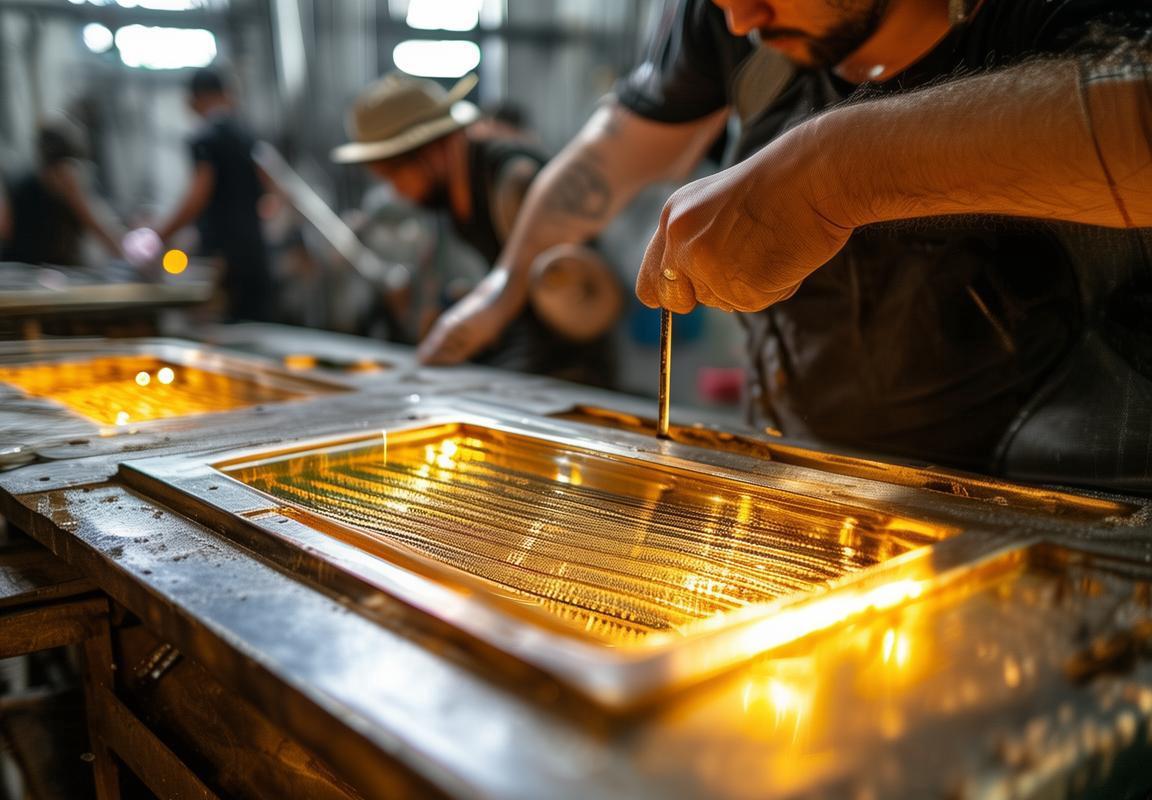
Streamlining the Grill Manufacturing Process
In-house mold making has revolutionized the grill manufacturing process, offering a plethora of advantages that can significantly enhance efficiency and quality. By handling the mold-making process internally, companies can achieve a level of control and precision that is often missing when outsourcing. Here’s how in-house mold making streamlines the entire grill production journey.
The integration of in-house mold making allows for a seamless transition from design to production. Traditionally, grill manufacturers would rely on external mold makers to create the molds, which could lead to delays and miscommunication. With an in-house team, the design team can work closely with the mold-making experts, ensuring that the molds are perfectly tailored to the specifications of the grill design. This collaboration eliminates the need for multiple iterations and communication gaps, leading to a more efficient production cycle.
Customization and flexibility are at the heart of in-house mold making. The ability to modify molds quickly and easily is invaluable in the grill industry, where consumer preferences can shift rapidly. By having mold-making capabilities in-house, manufacturers can respond to these changes swiftly, producing custom grills that meet the latest market demands without the wait times associated with external mold makers. This agility keeps the production line moving and the inventory fresh.
Quality control is paramount in the grill manufacturing process, and in-house mold making ensures that every aspect of this control is tightly managed. The same team that designs the grill also oversees the mold-making process, guaranteeing that the molds are of the highest quality and meet the exacting standards required for the final product. This consistency in quality is not only crucial for the reputation of the grill brand but also for the safety and satisfaction of the end-users.
Efficiency is a cornerstone of in-house mold making, and it directly impacts the grill manufacturing process. By eliminating the need to ship molds back and forth, manufacturers can reduce lead times and expedite the production process. Additionally, in-house mold makers can optimize the molds for the specific machinery used in the production line, ensuring that the molds fit perfectly and operate efficiently. This optimization not only speeds up the production but also reduces the risk of machine downtime and costly repairs.
Cost savings are a significant benefit of in-house mold making. While the initial investment in mold-making equipment can be substantial, over time, it can lead to significant cost reductions. By avoiding the costs associated with outsourcing, such as shipping, mold handling, and potential quality issues, companies can allocate resources more effectively. This cost-effectiveness can be passed on to customers, making the final product more competitive in the market.
The speed of production is another area where in-house mold making shines. With immediate access to molds and the ability to produce them on demand, manufacturers can reduce wait times and meet tight production schedules. This agility is particularly beneficial during peak seasons or when responding to high customer demand, as it allows for the rapid scaling up of production without compromising on quality.
The integration of in-house mold making also fosters a culture of innovation within the company. When all aspects of the manufacturing process are under one roof, there is a greater opportunity for cross-departmental collaboration and idea sharing. This environment can lead to the development of new grill designs and manufacturing techniques that push the boundaries of what’s possible in the industry.
Lastly, the environmental impact of in-house mold making is worth noting. By reducing the need for transportation and minimizing the carbon footprint associated with shipping molds, companies can contribute to a more sustainable manufacturing process. This commitment to environmental responsibility can enhance the brand’s image and appeal to consumers who are increasingly conscious of their ecological footprint.
In summary, the grill manufacturing process is streamlined through in-house mold making by enhancing collaboration, customization, quality control, efficiency, cost savings, production speed, fostering innovation, and promoting environmental sustainability. These benefits collectively contribute to a more agile and competitive manufacturing operation, capable of delivering high-quality grills to market with ease and precision.
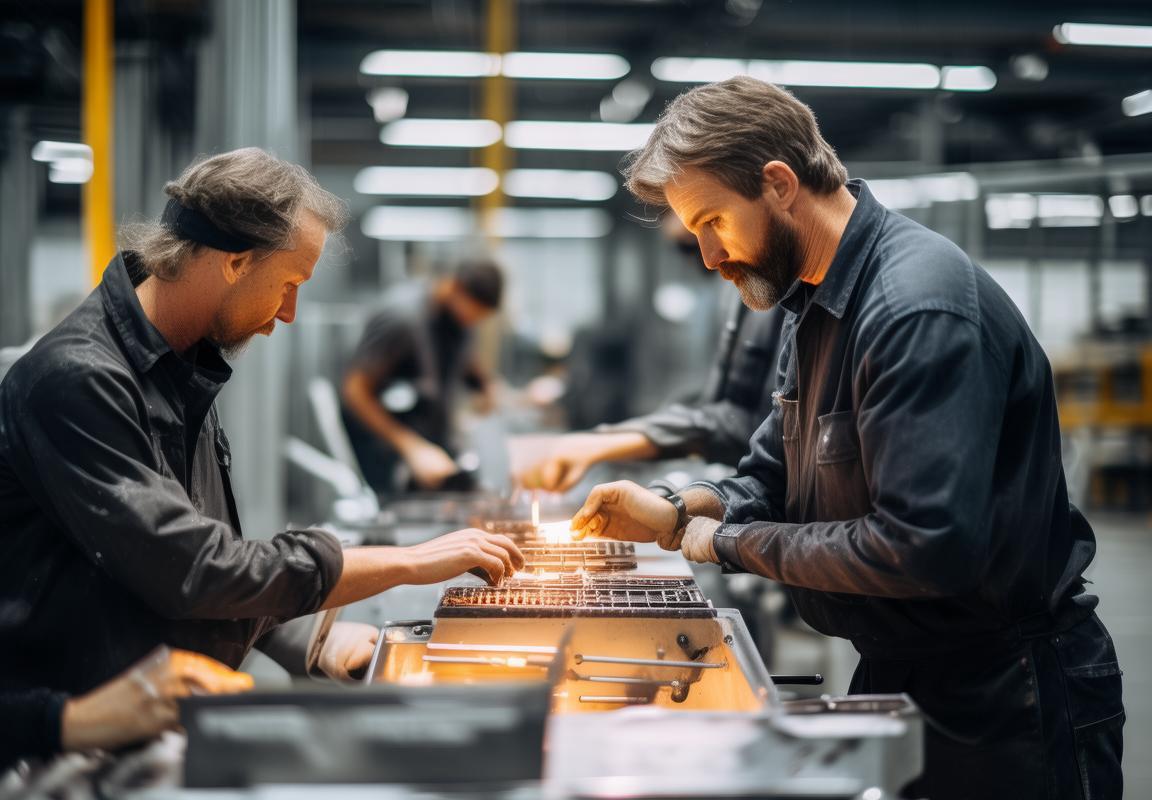
Precision and Quality Control in Every Mold
In the world of grill production, the quality of every component is paramount. One of the most critical elements is the mold itself, as it directly impacts the precision and overall quality of the grill. Here’s how the process ensures that every mold is a testament to excellence.
Mold Design and Engineering Precision begins with the design phase. Skilled engineers meticulously craft mold designs that are not just aesthetically pleasing but also functionally perfect. These designs are often the result of advanced CAD (Computer-Aided Design) software, which allows for intricate details and complex geometries that are essential for creating grills with seamless and durable parts.
Material Selection The choice of material for molds is crucial. High-quality steel, such as tool steel or aluminum, is commonly used due to its strength and ability to withstand the extreme temperatures and pressures of the molding process. The material’s hardness and resistance to wear are key factors in ensuring that the mold maintains its precision over time.
Heat Treatment and Hardening Once the mold is constructed, it undergoes a series of heat treatments to enhance its properties. Heat hardening, for instance, increases the mold’s hardness and, which is vital for maintaining the shape and integrity of the grill components during the molding process. This step is carefully controlled to prevent distortion and ensure that the mold remains true to the original design.
Quality Assurance Protocols Every mold is subject to rigorous quality control checks. These protocols include dimensional inspections, where precise measurements are taken to ensure that the mold’s dimensions are within the required tolerance. Non-destructive testing methods, like ultrasonic or X-ray inspections, are also employed to detect any internal defects that could affect the quality of the grill parts.
Surface Finishing The surface of the mold is treated to reduce friction and wear. This is typically done through processes like polishing or coating with materials that improve the mold’s lifespan and the finish of the grill parts. A smooth surface not only reduces the risk of imperfections on the final product but also ensures that the mold can be used repeatedly without losing its precision.
Regular Maintenance and Calibration Even the most precise mold requires regular maintenance. This includes cleaning to remove any debris that could cause imperfections, as well as recalibration to ensure that the mold remains true to its original design. The maintenance schedule is often based on the number of cycles the mold has been used and the specific requirements of the grill components being produced.
Continuous Improvement The process of ensuring precision and quality in every mold is an ongoing one. Manufacturers invest in continuous improvement initiatives, such as adopting new technologies and refining existing processes. This could involve the use of advanced machine tools for mold making, the implementation of AI-driven design optimization, or the introduction of new materials that offer even greater durability and precision.
Collaboration with Design Teams The mold-making process is closely aligned with the design teams. Regular collaboration ensures that any changes or updates to the grill design are quickly and accurately reflected in the mold. This synergy between design and manufacturing is crucial for producing high-quality grills that meet the latest market demands.
In conclusion, the precision and quality control in every mold are the cornerstones of a successful grill manufacturing process. From the initial design to the final maintenance, every step is carefully managed to ensure that the mold remains a reliable tool for producing top-notch grill components. This commitment to excellence is what sets apart the best grill manufacturers in the industry.
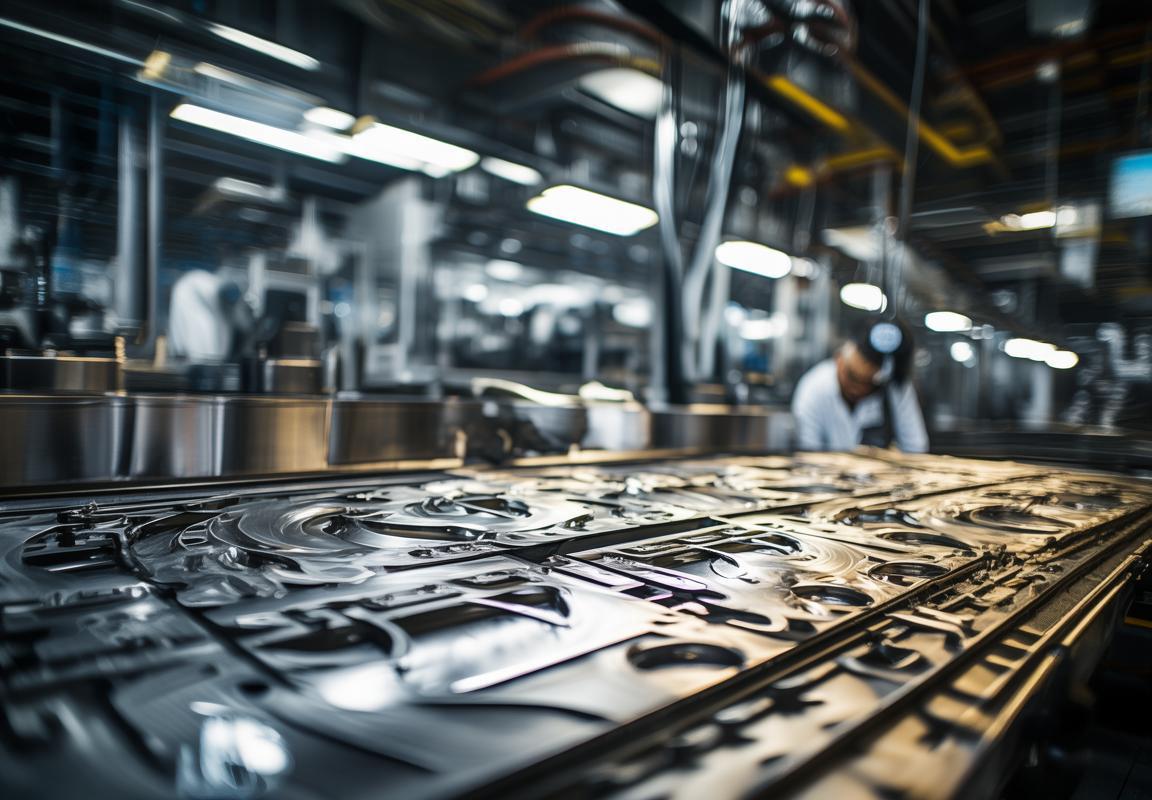
Cost-Effectiveness and Flexibility with In-House Solutions
In the realm of grill production, cost-effectiveness and flexibility are two pillars that can make or break a manufacturing process. By opting for in-house mold making, companies are able to capitalize on these crucial aspects, leading to a more efficient and adaptable production flow. Let’s delve into how in-house solutions can offer both financial savings and the agility needed to meet the dynamic demands of the market.
Mold making within the company’s walls allows for a direct oversight of the quality of materials and processes used. This control over the supply chain minimizes the risk of receiving subpar materials that could compromise the integrity of the molds. With in-house expertise, every detail from the selection of raw materials to the final product is meticulously managed, ensuring that the cost of materials is optimized without sacrificing quality.
By keeping mold production in-house, companies can reduce the costs associated with outsourcing. Transportation fees, import duties, and the markup often added by third-party mold makers can all be avoided. This not only cuts down on direct expenses but also streamlines the logistics process, which can be time-consuming and unpredictable when relying on external suppliers.
The ability to make changes on the fly is a game-changer in the competitive grill industry. In-house mold making enables companies to quickly adapt to new market trends or customer feedback. Whether it’s a minor tweak to the design or a complete overhaul of the mold for a new product line, the speed of implementation is significantly faster than when outsourcing. This agility ensures that the company can respond swiftly to market demands, staying ahead of the competition.
Regular maintenance and calibration of molds are essential for maintaining high-quality production. With in-house mold making, the maintenance team can closely monitor the condition of the molds and address any issues promptly. This proactive approach to maintenance not only prevents costly downtime but also ensures that the molds continue to produce grills with the same level of precision and consistency.
In-house mold making also fosters a culture of continuous improvement. Employees who are involved in the mold-making process gain a deeper understanding of the product and its manufacturing requirements. This knowledge can lead to innovative solutions that improve the efficiency of the manufacturing process, reducing costs over time.
When it comes to customization, in-house solutions shine. Each grill model may have specific features or design elements that require precise mold specifications. With in-house mold making, these details can be incorporated seamlessly into the manufacturing process, ensuring that each grill meets the exact specifications required. This level of customization can be difficult to achieve when relying on external mold makers, who may not have the same level of familiarity with the product or the market needs.
The cost-effectiveness of in-house mold making is not just about reducing expenses; it’s also about maximizing the value of the investment. By using the molds over and over again, the company can spread the initial cost of mold creation across many production cycles. This amortization of costs over time results in a lower per-unit cost, making the product more competitive in the market.
Moreover, in-house mold making can lead to better inventory management. With a clear understanding of the production schedule and the life cycle of the molds, companies can better anticipate and manage their inventory levels. This avoids overstocking or stockouts, which can tie up capital or lead to missed sales opportunities.
Lastly, the flexibility of in-house mold making extends beyond the production floor. It allows companies to explore new materials or technologies that may not have been previously viable due to the constraints of external mold making. This can open up new opportunities for product development and innovation, further enhancing the company’s competitive edge.
In conclusion, the cost-effectiveness and flexibility that come with in-house mold making are not just about saving money; they are about creating a robust, responsive, and sustainable production process. By controlling every aspect of mold making, companies can ensure that their grills are not only high-quality but also priced competitively, meeting the evolving demands of the market with precision and efficiency.
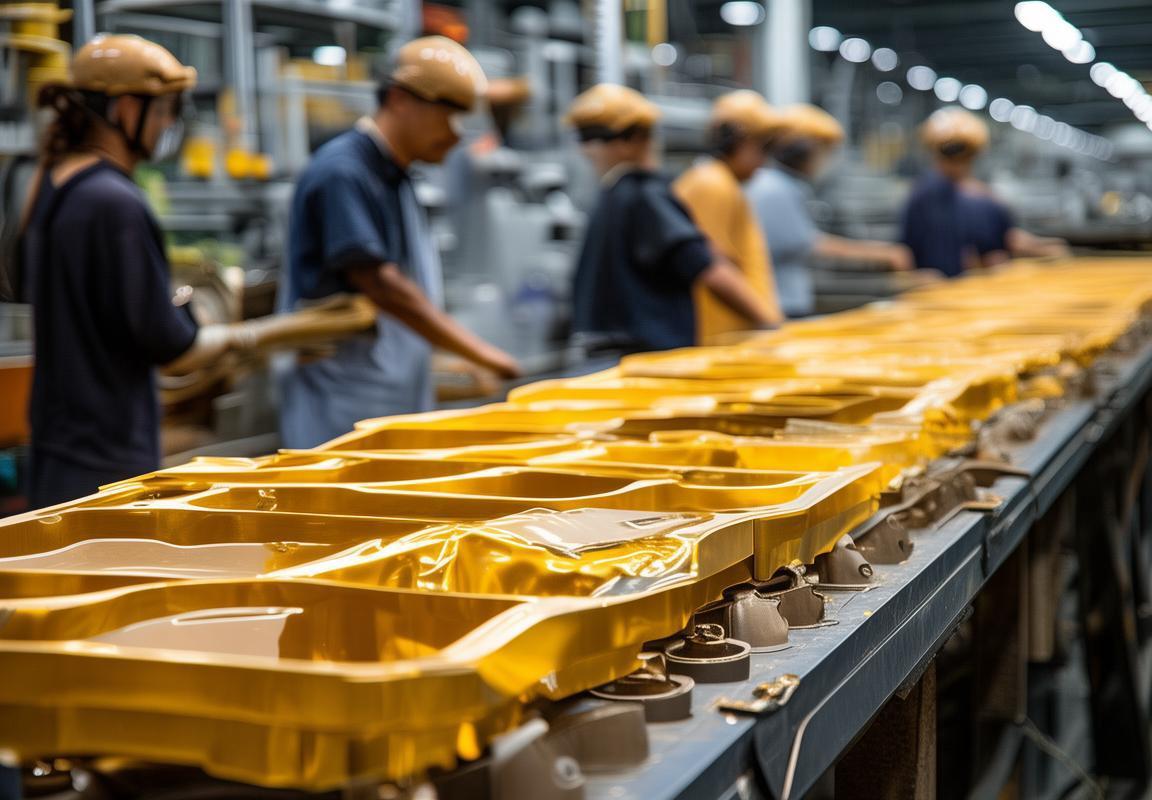
Case Study: A Grill Manufacturer’s Success Story
In a world where innovation meets tradition, there’s a grill manufacturer that stands out for its remarkable journey. Let’s delve into their success story, highlighting how in-house mold making has been the cornerstone of their growth.
This grill manufacturer, known for its commitment to quality, found itself at a crossroads. The competition was fierce, and the demand for unique, high-quality grills was soaring. It was clear that to stay ahead, they needed a game-changing approach to their production process. That’s when they decided to invest in in-house mold making.
The shift from outsourcing to in-house mold production was not without its challenges. Initially, there were concerns about the cost and the learning curve. However, the long-term benefits began to outweigh these initial hurdles. By bringing mold making in-house, they gained complete control over the design, quality, and turnaround time of their grill components.
The process of in-house mold making allowed the manufacturer to experiment with different materials and designs. They could refine the molds to ensure they were not only durable but also efficient in producing grills with intricate details. This level of customization was previously unattainable with external suppliers.
The success of their in-house mold making was not just about creating better products; it was about creating a culture of innovation within the company. Engineers and designers collaborated closely, leading to breakthroughs in grill design that set their products apart from the competition. The grills they produced were not just functional; they were works of art that could withstand the demands of outdoor cooking.
As the molds improved, so did the quality of the grills. The manufacturer noticed a significant reduction in defects and waste, as the in-house team could quickly adjust the molds to fix any issues that arose. This resulted in a higher percentage of first-pass quality products, which in turn, pleased their customers and reduced the need for returns and repairs.
One of the most remarkable aspects of the grill manufacturer’s success story is the impact it had on their supply chain. By eliminating the dependency on external mold makers, they were able to reduce lead times. Orders that used to take weeks to fulfill were now being processed in days. This agility allowed them to respond quickly to market demands and customer feedback.
The company also saw a direct financial benefit from their in-house mold making initiative. They invested in state-of-the-art equipment and training for their staff, which led to more efficient production processes. The savings from not outsourcing mold making were substantial, and they were able to reinvest these savings into research and development, further enhancing their product offerings.
Moreover, the manufacturer’s in-house mold making capability became a selling point for their customers. Potential clients were impressed by the manufacturer’s ability to customize grills to their specific needs, offering a level of service that was previously unavailable in the industry. This customization not only satisfied customers but also opened new markets for the company.
As the years went by, the grill manufacturer’s reputation for quality and innovation grew. They became known as a leader in the industry, with a product line that catered to both the casual grill enthusiast and the professional chef. The in-house mold making played a pivotal role in this transformation.
The success story of this grill manufacturer serves as a testament to the power of in-house mold making. It’s a story of how a company took control of its destiny, from the design of the product to the production process. It’s a story of how investing in internal capabilities can lead to a competitive edge, financial savings, and an unwavering commitment to quality.
Today, the grill manufacturer continues to innovate and push the boundaries of what’s possible in outdoor cooking. Their grills are not just products; they are symbols of the company’s journey, a journey marked by the wisdom of bringing mold making in-house and the rewards that followed.
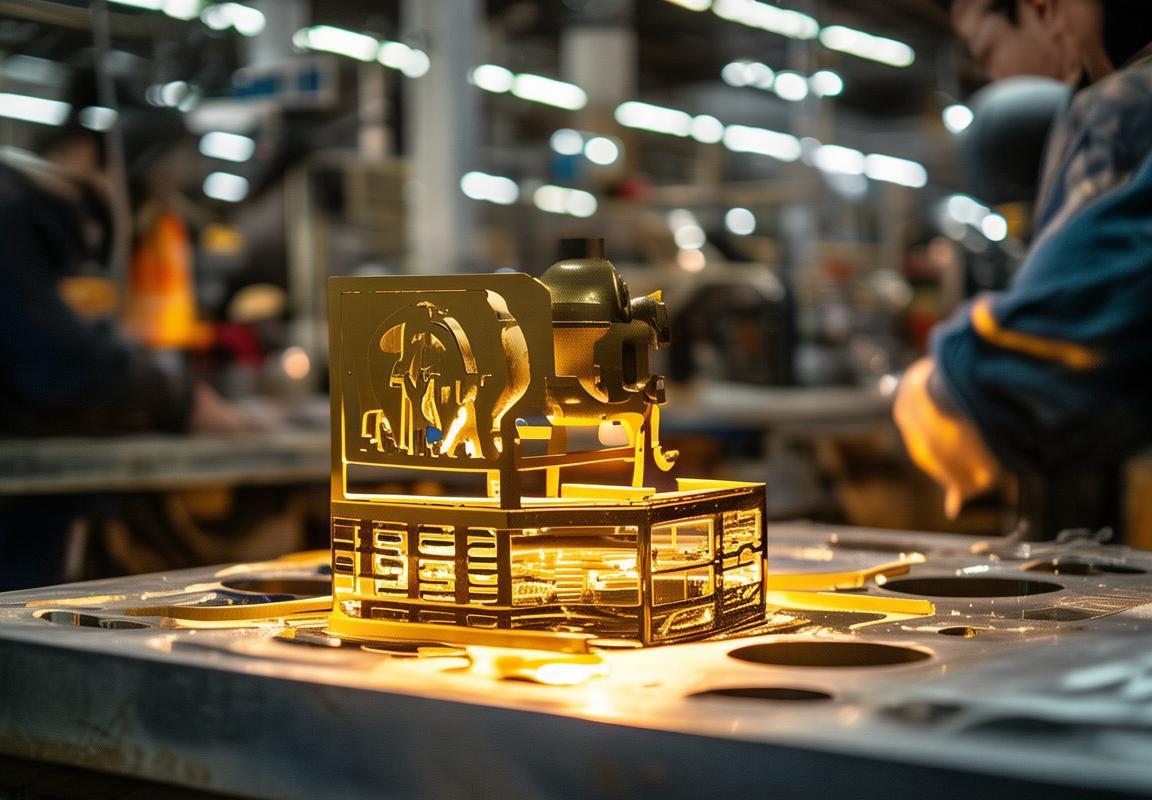
The Role of Innovation in Custom Mold Design
In the realm of custom mold design, innovation serves as the driving force behind pushing boundaries and crafting solutions that are not just functional but also revolutionary. Here’s a glimpse into how innovation shapes the landscape of custom mold design:
The Art of Tailoring to Unique NeedsCustom mold design is all about meeting specific requirements. Innovations in this field have led to the creation of molds that are not just shaped to fit a product but are also optimized for the materials and manufacturing processes involved. This tailored approach ensures that each mold is a perfect match for the product it’s intended to produce, whether it’s a high-end grill or a specialized part.
Advanced Materials and TechniquesAdvancements in materials science have allowed mold designers to explore new possibilities. Materials like high-performance alloys, ceramics, and composites offer greater durability, heat resistance, and precision. Techniques such as 3D printing have also revolutionized the design process, enabling the creation of complex geometries that were once impossible to produce.
Enhanced Efficiency Through AutomationAutomation has been a game-changer in mold design. Innovations in software and hardware have streamlined the design process, allowing designers to automate tasks that were previously time-consuming. This not only speeds up the design phase but also reduces the likelihood of human error, leading to more accurate and reliable molds.
Integrating Simulation and Real-World TestingModern mold design incorporates sophisticated simulation software that can predict how a mold will perform under various conditions. This integration of simulation with real-world testing allows designers to refine their molds before they are even built, saving time and resources. Innovations in this area have led to molds that are more resilient and efficient from the outset.
Sustainability and Environmental ConsiderationsThe green movement has influenced mold design as well. Innovations are not only focused on creating products that are environmentally friendly but also on reducing the carbon footprint of the manufacturing process. This includes designing molds that are easier to disassemble and recycle, as well as using sustainable materials in their construction.
Collaboration and Data-Driven DesignCollaboration between designers, engineers, and other stakeholders has become more seamless due to innovative design tools and platforms. These tools facilitate better communication and allow for data-driven design decisions. By analyzing vast amounts of data, designers can make informed choices that lead to more efficient and effective mold designs.
Customization at ScaleOne of the most significant innovations in custom mold design is the ability to customize at scale. With the right technology, it’s possible to create molds that are highly specific yet capable of producing thousands of identical parts. This shift has allowed for the mass production of unique, high-quality grill components.
The Human Element in InnovationWhile technology plays a crucial role, the human element is equally important. Innovations in mold design are often the result of creative problem-solving and a deep understanding of the manufacturing process. Designers who think outside the box and are not afraid to experiment with new ideas are often the ones who push the boundaries of what’s possible.
Adapting to Market TrendsThe grill industry is constantly evolving, and mold designers must stay ahead of the curve. Innovations in design often respond to market trends, such as the demand for eco-friendly grills or those with advanced features. By being adaptable and forward-thinking, mold designers can ensure that their products remain competitive.
In conclusion, innovation in custom mold design is a multifaceted endeavor that touches on materials, technology, sustainability, and collaboration. It’s a testament to human ingenuity and the relentless pursuit of perfection in the manufacturing process. As the grill industry continues to grow and change, so too will the role of innovation in shaping the molds that bring these products to life.
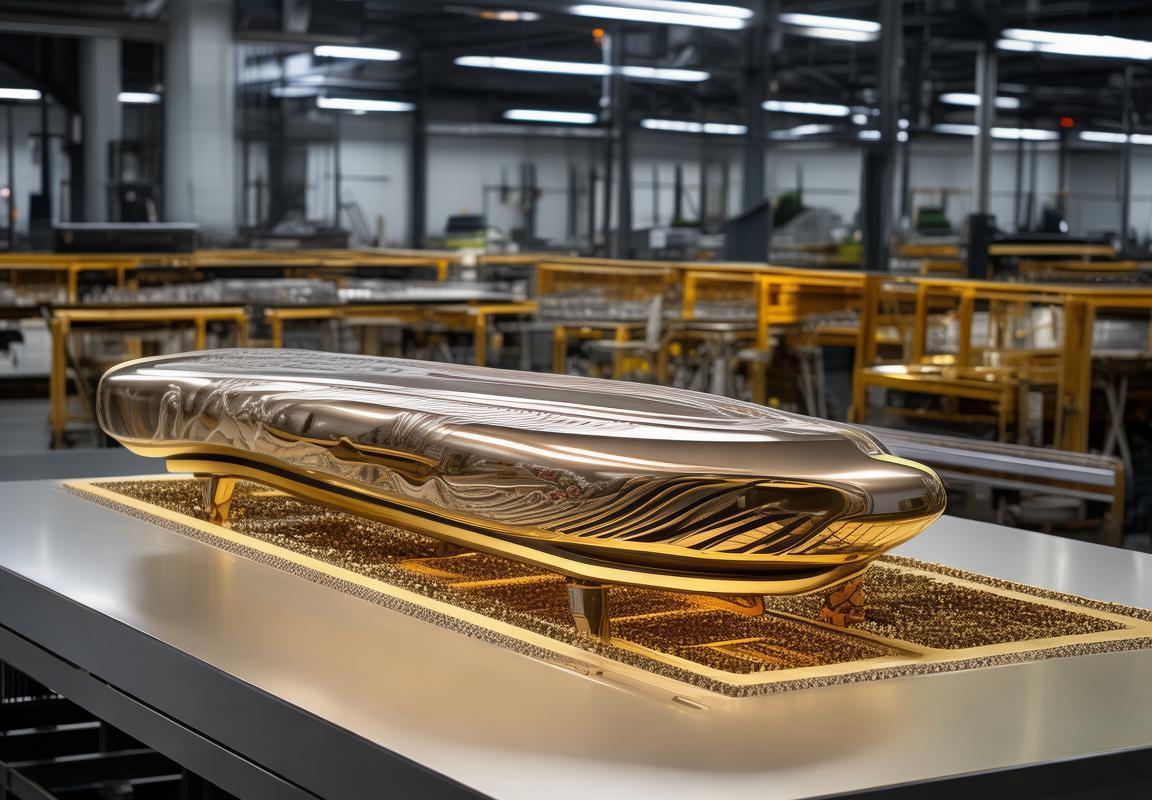
Ensuring Safety and Compliance with In-House Mold Making
In the realm of in-house mold making, safety and compliance are paramount. These factors are not just about adhering to regulations; they are about fostering a culture of excellence and trust within the manufacturing process. Here’s how these aspects play a critical role in in-house mold making:
Safety is the cornerstone of any successful operation. When it comes to mold making, the stakes are particularly high due to the use of sharp tools, powerful machinery, and potentially hazardous materials. Ensuring a safe working environment begins with the design phase. Engineers and technicians must consider the ergonomics of the mold, making sure that operators can handle it without risking injury. This includes designing handles and controls that are easy to grip and operate, as well as ensuring that the mold’s weight and balance are optimized for human use.
Regular maintenance and inspections are also crucial. Machines that are not properly cared for can lead to accidents and breakdowns. By having a dedicated team that conducts routine checks, manufacturers can identify and rectify potential hazards before they escalate. This proactive approach not only prevents accidents but also extends the life of the equipment, saving both time and money.
Compliance with industry standards and regulations is non-negotiable. In-house mold making operations must adhere to local and international safety codes, such as those set forth by the Occupational Safety and Health Administration (OSHA) in the United States or the Health and Safety Executive (HSE) in the UK. This means that every mold must be designed and manufactured to meet these stringent requirements.
One key aspect of compliance is the use of materials that are safe for both the workers and the end product. For example, certain plastics or metals may emit harmful fumes or contain heavy metals that could contaminate the final grill product. In-house mold making allows for the careful selection of materials that not only meet the required specifications but also prioritize safety.
Moreover, the training of employees is vital. Workers must be educated on the safe handling of tools, the operation of machinery, and the proper use of personal protective equipment (PPE). Regular safety briefings and refresher courses ensure that everyone is up-to-date with the latest procedures and protocols.
In the case of mold making, the precision of the design directly impacts the quality and safety of the final product. Molds that are not accurate can lead to defective parts, which could pose a risk to consumers. Ensuring that every detail is accounted for in the mold design is essential. This includes not just the dimensions and shapes but also the flow of materials within the mold, which can affect the cooling process and the integrity of the part.
Another critical aspect of compliance is documentation. In-house mold making operations must maintain thorough records of every aspect of the manufacturing process, from material sourcing to the final inspection. This documentation is not only a requirement for regulatory audits but also serves as a valuable reference for future projects.
The importance of safety and compliance cannot be overstated in in-house mold making. A commitment to these principles not only protects the workforce but also enhances the company’s reputation and bottom line. By investing in safety, companies can reduce the risk of accidents, minimize downtime, and avoid costly fines or legal action.
In the pursuit of excellence, innovation plays a significant role in mold design. Companies that embrace innovation are able to push the boundaries of what is possible, creating molds that are not only more efficient but also safer. For instance, advancements in 3D printing technology have allowed for the creation of complex molds that were once impossible to produce. These innovative molds can lead to more intricate grill designs, improved aesthetics, and enhanced performance.
Furthermore, innovative design can lead to cost savings. By optimizing the mold’s design, manufacturers can reduce the amount of material used, decrease cycle times, and improve the overall efficiency of the production process. This not only makes the operation more sustainable but also helps to keep costs down.
In terms of safety, innovation can also lead to the development of new materials or processes that mitigate risks. For example, the use of self-lubricating materials in molds can reduce the need for frequent maintenance, thereby minimizing the risk of accidents caused by exposure to hazardous substances.
In conclusion, the intersection of safety, compliance, and innovation in in-house mold making is where true success lies. By prioritizing these aspects, companies can create a work environment that is both safe and productive, while also producing high-quality grill products that meet the highest standards. This holistic approach not only ensures the well-being of the workers but also sets the stage for a sustainable and profitable future.
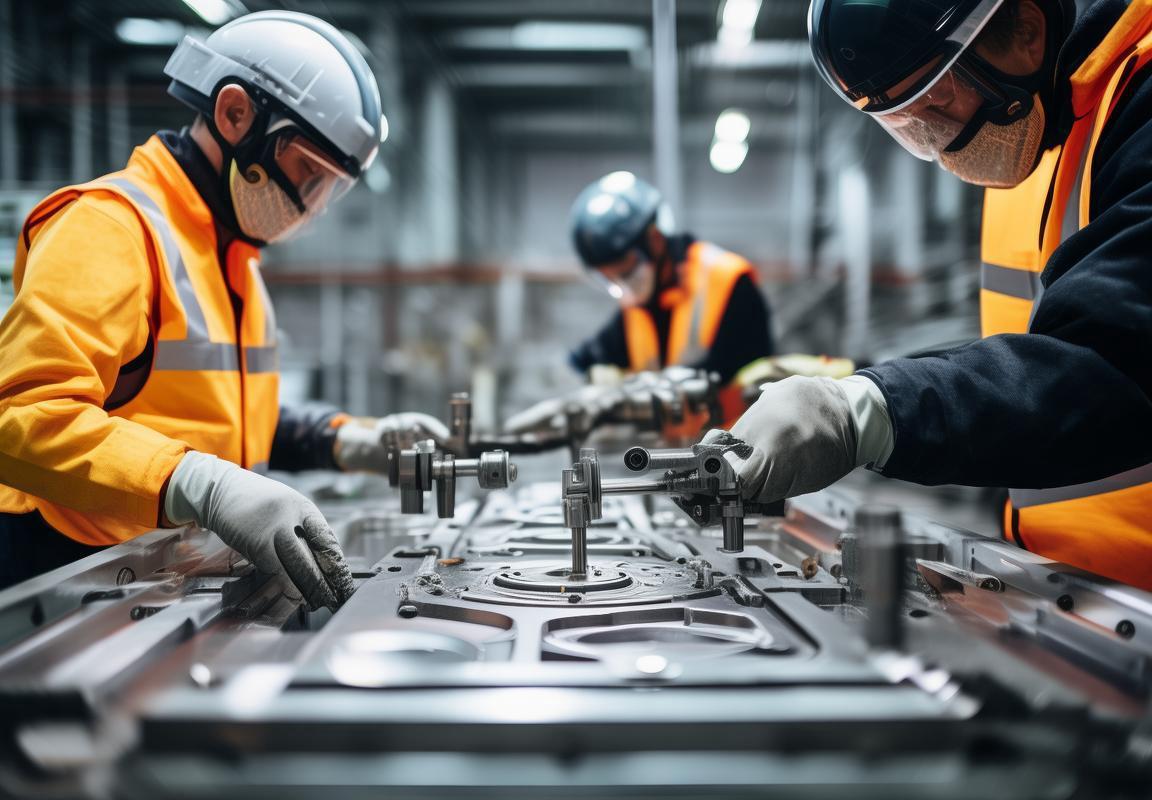
The Future of Grill Mold Making: What to Expect
As the demand for grills continues to rise, so does the need for advanced mold making techniques. The future of grill mold making holds a blend of technological advancements, sustainable practices, and an increasing emphasis on customer experience. Let’s explore what we can expect:
Grill molds are the backbone of any grill manufacturing process, shaping the metal into the desired forms. With the evolution of technology, we’re seeing a shift towards more sophisticated and efficient mold-making methods. One key development is the integration of 3D printing, which allows for the creation of complex grill designs with greater ease and speed.
The rise of 3D printing in mold making is not just about speed; it’s also about customization. Manufacturers can now produce molds that cater to specific market needs or even individual customer requests, which was once a lengthy and costly process. This level of personalization is transforming the way grills are designed and produced.
Sustainability is another factor shaping the future of mold making. With environmental concerns at the forefront, manufacturers are turning to eco-friendly materials and production methods. Recyclable and biodegradable materials are being explored, not just for the molds themselves but also for the entire manufacturing process. This shift not only benefits the planet but can also reduce long-term costs for grill producers.
Quality control is paramount in the grill industry, and the future of mold making promises even stricter standards. Advanced inspection technologies, such as machine vision systems and automated testing, are becoming more prevalent. These technologies can detect defects at an early stage, ensuring that only high-quality grills leave the factory floor.
As the market for outdoor cooking continues to grow, so does the competition. Grill mold makers are responding by pushing the boundaries of what’s possible. We can expect to see a surge in innovative designs that are not only visually appealing but also functional. Molds that incorporate smart features, such as temperature control and smart connectivity, are likely to become more common.
The integration of smart manufacturing technologies, such as the Internet of Things (IoT), is also on the horizon. Molds could be equipped with sensors that monitor their performance and health, predicting maintenance needs and reducing downtime. This kind of predictive maintenance can lead to increased efficiency and reduced waste.
Energy efficiency is another critical area that will see improvements in grill mold making. As manufacturers seek to reduce their carbon footprint, they will focus on developing molds that are more energy-efficient during production. This could involve the use of advanced cooling systems, optimized design for faster cycle times, and even renewable energy sources.
Collaboration between designers, engineers, and material scientists will become more prevalent, driving the innovation in grill mold making. By bringing together diverse expertise, the industry can create more robust, durable, and user-friendly grill products.
In terms of materials, the future holds exciting possibilities. New alloys and composites are being developed that offer better heat resistance, corrosion resistance, and strength. These materials can lead to grills that are not only more durable but also more resistant to the outdoor elements.
Safety will remain a top priority, with a focus on ensuring that molds are not only durable but also user-friendly. Designers will incorporate safety features into the molds themselves, making them easier to handle and maintain. This could include ergonomic designs, built-in safety guards, and automated systems that reduce the risk of accidents.
As we look to the future of grill mold making, it’s clear that the industry is poised for significant changes. The emphasis on innovation, sustainability, quality, and safety will shape the next generation of grill molds. The grill manufacturer that embraces these changes will be well-positioned to meet the evolving demands of consumers and the industry as a whole.
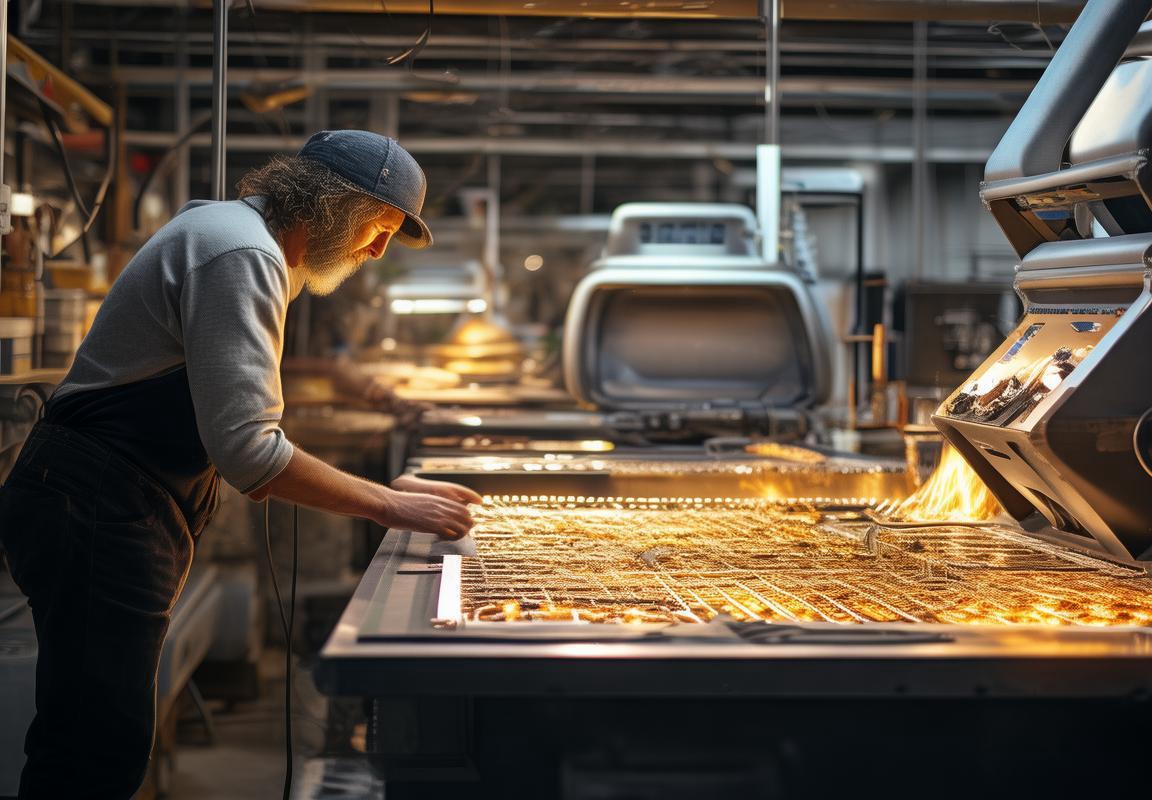
Final Thoughts: Why In-House Mold Making is a Game-Changer
In the ever-evolving world of grill manufacturing, the significance of in-house mold making cannot be overstated. It’s a game-changer that brings a myriad of benefits, from enhanced quality control to streamlined production processes. Let’s delve into why this shift has become pivotal for grill manufacturers worldwide.
The ability to design and produce custom molds in-house allows for a level of control and precision that is nearly impossible when outsourcing. This autonomy means that every detail of the mold can be tailored to the exact specifications of the grill design, ensuring a perfect fit every time. The result? Grills that not only look sleek and modern but also perform optimally, thanks to molds that are precisely crafted to enhance heat distribution and durability.
Manufacturers who opt for in-house mold making often report a noticeable decrease in lead times. When molds are made in-house, the production process is no longer dependent on the availability of external suppliers. This eliminates the waiting period associated with ordering molds from third parties and ensures that the manufacturing process can proceed smoothly and efficiently.
Not to mention, the cost savings can be substantial. By reducing reliance on external suppliers, companies can cut down on shipping costs and the price of materials. Moreover, in-house mold making allows for economies of scale, as molds can be produced in larger quantities, leading to a lower unit cost. This cost-effectiveness is a game-changer for businesses looking to remain competitive in a market where consumers are increasingly price-sensitive.
Another critical aspect of in-house mold making is the opportunity for continuous improvement. When manufacturers have control over their molds, they can experiment with different designs and materials. This iterative process allows for the refinement of existing products and the creation of new ones. The flexibility to test and tweak molds means that grill manufacturers can stay ahead of the curve in terms of innovation and design.
Consider the story of FireGrill Co., a company that shifted to in-house mold making. Before the change, they were consistently experiencing delays due to mold issues. The lack of control over their molds meant that even small adjustments to the design could lead to significant production setbacks. However, once they brought mold making in-house, they saw a dramatic improvement. Not only did they reduce lead times, but they also noticed a decrease in defects and an increase in customer satisfaction.
The role of innovation in custom mold design cannot be overstated. It’s not just about creating molds that fit the current grill models; it’s about anticipating future trends and creating molds that can adapt to new designs. For example, as the demand for eco-friendly grills has grown, mold makers have had to innovate to produce molds that can handle sustainable materials without compromising on quality.
Safety and compliance are also paramount in in-house mold making. By having a dedicated team of mold makers, companies can ensure that every aspect of the manufacturing process adheres to the highest safety standards. This includes the use of materials that are non-toxic and the implementation of practices that minimize the risk of accidents. Compliance with industry regulations is not just a legal requirement; it’s a commitment to the well-being of customers and employees.
Looking ahead, the future of grill mold making is bright. With advancements in technology, we can expect to see even more sophisticated molds that not only improve the performance of grills but also the sustainability of the manufacturing process. 3D printing, for instance, is poised to revolutionize mold making by allowing for more complex designs and shorter production times.
In conclusion, the shift to in-house mold making is a strategic move that has transformed the grill manufacturing landscape. It offers unparalleled precision, cost-effectiveness, and flexibility, all while fostering innovation and ensuring safety. For grill manufacturers who want to remain competitive and meet the evolving demands of consumers, in-house mold making is not just a trend; it’s a necessity. The benefits it brings are clear, and the potential for continued growth is immense.